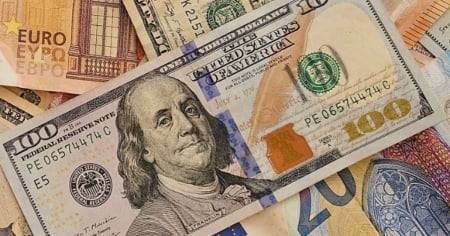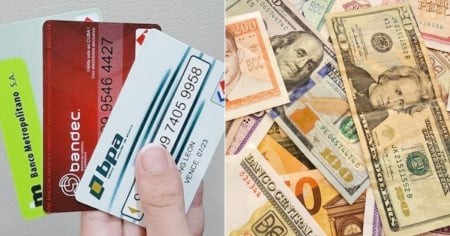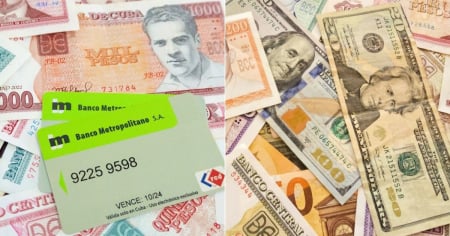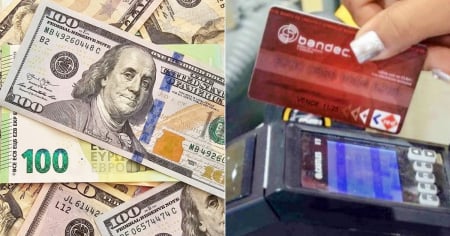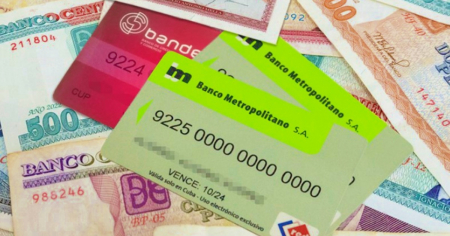The informal foreign exchange market opens this Sunday unchanged for the third consecutive day in Cuba, following a week marked by repeated increases in the Convertible Currency (MLC).
The US dollar is still valued at 340 CUP, and the euro at 345 CUP.
In the case of the MLC, it remains at 270 CUP, as revealed by elToque in its daily report that documents the ups and downs of currency in trading.
The virtual currency used by the regime in some stores, which some believe is doomed to disappear, has increased by a total of 25 pesos since February 14.
Exchange rate today 02/23/2025 - 11:14 a.m. in Cuba:
Exchange rate of the dollar USD to CUP according to elTOQUE: 340 CUP.
Exchange Rate Evolution
Exchange rate of the euro EUR to CUP according to elTOQUE: 345 CUP.
T exchange rate of MLC to CUP according to elTOQUE: 270 CUP.
Why has the MLC risen in recent days?
The recent appreciation of the Convertible Currency (MLC) in Cuba has generated surprise among both citizens and the economic sphere. The paradox lies in the fact that, despite the decrease in stores accepting this currency, its value has increased, contradicting typical expectations in a low-demand scenario.
According to economist Pavel Vidal, in statements to elToque, this increase could be merely a "temporary correction" following the significant drop in value at the beginning of the year. From the Observatory of Currencies and Finances of Cuba (OMFi), Vidal explained that such adjustments are normal after sharp fluctuations in prices. Furthermore, the rigidity of prices in a market affected by scarcity encourages arbitrage operations, which could temporarily boost the demand for MLC.
On social media, some users have suggested other reasons behind this phenomenon. The scarcity of products in state stores that accept MLC could be a key factor. One user pointed out that certain items, purchased in MLC and resold in Cuban pesos at the current exchange rate, generate substantial profits.
Cigars have been identified as a key product in this context. Their low price elasticity of demand ensures that smokers continue to purchase them, regardless of their cost. Some users claim that profits can sometimes double the original value of products bought in MLC.
Other goods such as eggs, yogurts, sausages, detergent, or soap are also encouraging the growing demand for this currency, due to the advantages of reselling them for Cuban pesos with significant profit margins.
Despite the recent increase, Vidal believes that these fluctuations do not change the downward trend that the MLC has shown in the informal market over the past two years. Meanwhile, the Cuban regime continues to move towards a partial dollarization of sales, accepting payments in cash or via cards such as VISA, MasterCard, and Clásica, the latter managed by the government itself.
It is hard to doubt the downfall of the Free Convertible Currency, especially since the Cuban regime reopened last week the doors of the Infanta and Santa Marta Market in Havana, offering a wide range of products but with a significant change in its payment system: it no longer accepts Free Convertible Currency (MLC).
Despite previously allowing transactions in MLC, it now only accepts payments with VISA, MasterCard, MIR, and prepaid cards issued by BANDEC, AIS, Viajero, and Clásica, the latter offering a 5% discount on purchases.
In addition to the mentioned spaces, the regime has authorized more than a dozen wholesale and retail businesses in foreign currency, eight of which are connected to the MINCIN enterprise system.
Frequently asked questions about the foreign exchange market in Cuba
What is the current value of the dollar, euro, and MLC in the Cuban informal market?
The US dollar is trading at 340 CUP, the euro at 345 CUP, and the Convertible Currency (MLC) at 270 CUP in the informal Cuban market, according to a recent report by elToque.
Why has the value of the MLC increased in recent days?
The increase in MLC could be due to a "temporary correction" following its decline at the beginning of the year, according to economist Pavel Vidal. Additionally, the scarcity of products in stores that accept MLC and the potential for reselling them with significant profit margins could be driving the demand for this currency.
What impact does partial dollarization have on the value of currencies in Cuba?
Partial dollarization has generated a greater demand for foreign currencies like the dollar and the euro, as more and more basic products are only available in stores that operate in these currencies. This has intensified the pressure on the informal currency market in Cuba.
What products are driving demand for MLC?
Products such as cigars, eggs, yogurts, sausages, detergent, and soap are driving the demand for MLC due to the advantages of reselling them in Cuban pesos with significant profit margins.
Filed under:

